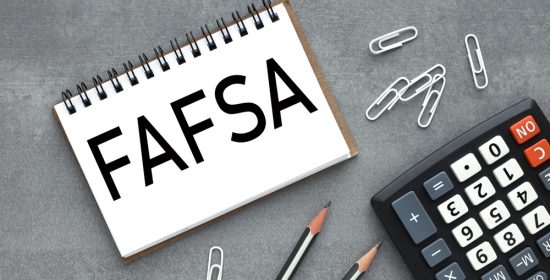For many students, the Free Application for Federal Student Aid (FAFSA) is the key to affordable higher education. It’s no secret that college can be expensive–even for some relatively well-off families. Understanding how to fill out the FAFSA may take a while, but you definitely should.
While filling out the form, you need to add a list of schools you’re considering to your FAFSA so that these institutions can prepare a suitable package for you based on your financial information. This article covers how to add schools to the FAFSA, plus additional information to help make the process easier for you. After filling out the form, you may want to change the schools on your list. This article also covers how to change schools on your list, after you’ve already filled out the FAFSA.
Before discussing how to actually add your list of colleges, it is good to understand how the form works and why it is important to add all your potential schools to your FAFSA.
Why Do I Need to Add Schools to My FAFSA?
While filling out the FAFSA, you must list at least one college, but adding all the colleges you’re interested in is a good idea. The information you provide on the FAFSA form is sent to each school you list. Here’s why adding schools to your FAFSA is important:
Facilitating Cost of Attendance (CoA) comparisons:
The FAFSA helps you compare financial aid packages across institutions by enabling you to evaluate the details of each college’s offer, including the amount and type of aid provided. Additionally, by subtracting the financial aid from the Estimated Cost of Attendance (CoA), you can calculate the net price and determine the actual out-of-pocket expenses for each college, comparing affordability.
For instance, if your first-priority target college offers $10k in financial aid, with the total cost for college being $50k, then your estimated CoA is around $40k. By adding multiple schools to your FAFSA, you can compare CoAs across colleges to figure out which one’s most affordable for you.
(This example is purely illustrative but can help you better understand how to use the FAFSA to compare college offers and why adding more than one school is a good idea).
Determining eligibility for government aid:
By adding schools to your FAFSA, you help those institutions to access your financial information and determine your eligibility for various types of financial aid, including federal grants, loans, and work-study programs.
Institutional aid consideration:
Many colleges have their own institutional aid programs, which are separate from federal financial aid. By adding schools to your FAFSA, you provide them with the necessary information to consider you for scholarships, grants, or other forms of financial aid specific to those institutions.
For instance, applicants who add Regent University and Keiser University to their FAFSA school list could be considered for Regent University Donor-Funded Scholarships and Keiser University Scholarship Programs, respectively.
This can increase your chances of receiving additional funding to help cover your college costs.
Accessibility to state aid and scholarships:
Many states have their own financial aid programs and scholarships. To potentially be eligible to get state financial aid, you need to fill out the FAFSA and add at least one school from the state. Most states give preference to residents, i.e. students from the state. Others require you to have at least graduated from a high school in the state. A few states do offer aid to out-state students. Check the official websites of the states you wish to study in and learn more about their eligibility criteria for financial aid. If you want to study in your home state, you need to find and add at least one school from your state to your FAFSA to be eligible for financial aid. Our college match tool can help you do this in minutes.
Understanding FAFSA Federal School Codes
FAFSA Federal School Codes (also known as Title IV Institution Codes) are unique 6-digit codes assigned to each school. You need to add these codes for all the schools on your list to the FAFSA in order for your application to be sent to the corresponding school.
Federal School Codes are always six characters: G, B, 0 (zero), or E, followed by a five-digit number. For example: The FAFSA code for Brooklyn Law School is G02677.
Adding the correct code ensures that your FAFSA, with accompanying information, gets sent to the schools you’re interested in, helping them decide on a better financial aid package for you.
How to find the Federal School Codes for my colleges?
Finding the correct federal school codes is not too difficult. You can find it through:
- The official Federal School Code Search Tool on the FAFSA website.
- The official list of Federal School Codes, updated periodically. (For the academic year 2023-24, refer to this document).
- The websites of the colleges you’re interested in. A simple Google search in the format “<college name> Federal School Code” can help you find it in seconds. Here is an example for Rocky Mountain College:
Adding Schools to Your FAFSA
Here’s how you can add schools to your FAFSA:
- Visit the FAFSA form page.
- Select the “Log In” button and enter your account username and password (FSA ID). If this is your first time, Click “Start Here” and set up your account to access the form.
- Select the student role. (Only students can add colleges to the FAFSA).
- On the “My FAFSA” page, first select “Add/Change Schools,” and then select “Continue.”
- You will then be prompted to create a save key. This will help you save progress and access your FAFSA later.
- Add your list of colleges with the correct federal school codes.
- Submit your information.
The form lets you add colleges from the list on the official database. To search for the colleges you want to add, first, select the state in which the college is located, then enter the city and/or school name, and hit “Search.” The site will then display results in order of “best match”. You can re-sort the list in alphabetical order by school name.
You may need to provide the following information for the colleges in your list:
- The correct federal school code
- The official name of the institution
- Address and city
- State
- Your residential preferences – on-campus, with a parent, or off-campus (this is important since it can change your overall cost of college).
How many schools can you list on your FAFSA?
You need to add at least one college to your list while filling out the FAFSA. The online FAFSA lets you add a maximum of 10 schools. On the other hand, the PDF form allows a maximum of 4 schools.
The order of schools on your list
The order of schools listed on your FAFSA usually does not impact your eligibility for state aid programs in most states. A few states and provinces, such as South Carolina and Vermont, may require your schools to be listed in a specified order to be considered for state aid.
For federal student aid, the order of schools you list on your FAFSA generally doesn’t matter. Click on the name of your state below to find your state’s recommendations for listing schools on your FAFSA form.
Changing Schools on Your FAFSA
You can only add up to 10 schools to your list, as mentioned earlier. If you want to add an 11th school, you’ll need to remove one of the other schools. You may choose which one to replace with the new school. The school removed from your list will no longer have automatic access to any new information you provide.
The process for changing your school list is similar to adding schools:
- Go to the FAFSA form page.
- Click the “Log In” button and enter your FSA ID.
- Select your role (student).
- On the “My FAFSA” page, select “Add/Change Schools,” and then select “Continue.”
- Create another save key.
- Change your information as required.
- Submit the new information.
By changing your college list, you can virtually send your information to more than 10 schools, but you need to decide on which to remove. For instance, if you want to add 5 new schools, you have to remove 5 schools from your original list and replace them with the new ones you’ve chosen. Don’t forget that the schools that you remove no longer have access to the information provided on your FAFSA.
Conclusion
Adding schools to your FAFSA can help you maximize your opportunities for financial aid. By following the simple steps outlined in this article, you should be able to confidently navigate the FAFSA and add the schools that align with your educational goals. Be sure to research each institution’s financial aid deadlines and requirements to stay on track. Duly adding all the colleges on your list with the correct information can help make your college dreams a reality. Stay organized, stay informed, and take advantage of the financial aid resources available to you. Start early, be thorough, and submit your FAFSA with confidence, knowing that you have taken the necessary steps to secure the financial support you need for your educational journey.
Frequently Asked Questions (FAQs)
Yes, you can add schools to your FAFSA even if you haven’t finalized your college list. It’s recommended to include schools that you are considering or have a strong interest in. You can always make changes to your FAFSA later if needed.
While it’s not mandatory to add all the schools you’re applying to, it’s generally recommended to include any schools you’re considering. This ensures that your FAFSA information is available to those institutions and allows them to determine your eligibility for financial aid.
Yes, you can add schools to your FAFSA even if you’re uncertain about your acceptance. The FAFSA is used for financial aid purposes, and it’s important to provide accurate information to maximize your aid opportunities. Adding schools you’re interested in, regardless of acceptance uncertainty, ensures you are considered for all available aid options.
If you can’t find your college’s federal school code in the Federal Student Aid database, it’s possible that it may also be listed under an alternative name on the database. Or, in rare cases, it may not participate in federal student aid programs.
Contact your college’s financial aid office to ensure you have the right information.



